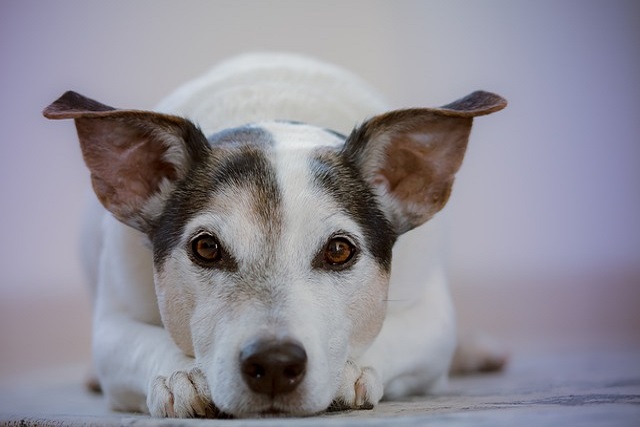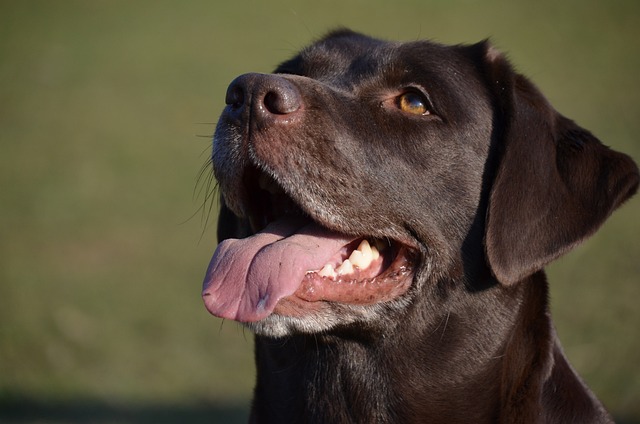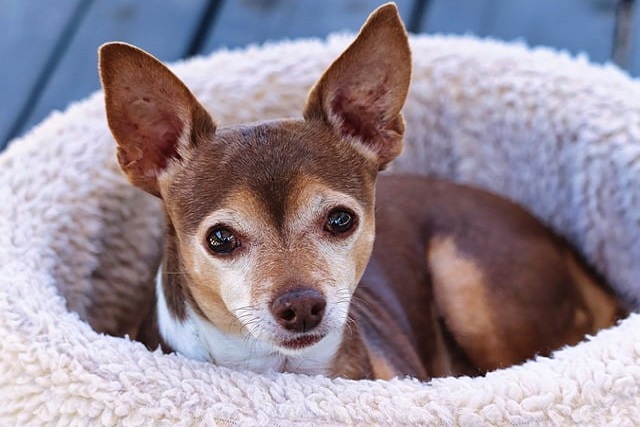When your furry dog suddenly coughs violently, breathes rapidly, or even whimpers in pain, every pet owner's heart will tighten instantly. Tracheal foreign objects, this "invisible killer" hidden in daily life, is threatening the dog's life in unexpected ways. Those seemingly safe small toy fragments, bones that are chewed too quickly, and leaves swallowed by mistake while playing, may become "time bombs" that block the trachea. In the face of such an emergency, how to regain the hope of life for the dog in the race against time is a life compulsory course that every pet owner needs to master.
The occurrence of foreign objects in the dog's trachea often occurs in an instant. When an excited puppy chases a plush toy, it may bite off the stuffing and inhale it; when a greedy pet dog chews a bone, the sharp bone fragments may cut the throat and get stuck in the narrow part of the trachea. When a foreign object enters the trachea, the dog will immediately have a violent cough, trying to expel the foreign object through this natural reaction of the body. As the foreign body irritates and blocks the tracheal mucosa, the cough will gradually become hoarse, the breathing will become rapid and difficult, the nostrils will flare significantly, and even cyanosis will occur - this is a dangerous signal of severe hypoxia. Some dogs will show anxiety, frequently scratch their necks with their claws, or make swallowing difficulties. These are all their last efforts to send a distress signal to their owners.
The moment the dog shows symptoms of foreign body in the trachea, the owner must calm down quickly. Emotional panic will not only affect judgment, but also delay precious rescue time. At this moment, the most important thing is to quickly assess the dog's condition: observe whether the breathing is smooth, whether there is obvious wheezing, and whether the mental state is depressed. If the dog can still cough on its own, it means that the trachea is not completely blocked, and this is the body's attempt to save itself. The owner can try to encourage the dog to continue coughing by patting its back and patting it rhythmically from top to bottom along the trachea, using the impact of the airflow to help the foreign body out. But you need to pay attention to the strength to avoid causing secondary damage to the dog due to excessive force.
 If the dog has difficulty breathing, cannot speak, or even collapses to the ground, emergency measures must be taken immediately. The Heimlich maneuver is an effective means to deal with foreign body obstruction in the trachea, but the operation method needs to be adjusted accordingly according to the dog's body size and physiological structure. For small dogs, you can hold the dog in your arms with its abdomen facing up, and use your thumb and the other four fingers to quickly squeeze upward at the junction of the dog's chest and abdomen. By instantly increasing the abdominal pressure, the residual gas in the lungs is driven to form a strong airflow to flush out the foreign body. For large dogs, the dog needs to lie on its side on the ground, and the rescuer kneels on one knee and uses the base of the palm to quickly and forcefully impact inward and upward above the dog's abdomen. The movements should be continuous and rapid, and the dog's reaction should be closely observed. Once the foreign body is discharged, stop the operation immediately.
If the dog has difficulty breathing, cannot speak, or even collapses to the ground, emergency measures must be taken immediately. The Heimlich maneuver is an effective means to deal with foreign body obstruction in the trachea, but the operation method needs to be adjusted accordingly according to the dog's body size and physiological structure. For small dogs, you can hold the dog in your arms with its abdomen facing up, and use your thumb and the other four fingers to quickly squeeze upward at the junction of the dog's chest and abdomen. By instantly increasing the abdominal pressure, the residual gas in the lungs is driven to form a strong airflow to flush out the foreign body. For large dogs, the dog needs to lie on its side on the ground, and the rescuer kneels on one knee and uses the base of the palm to quickly and forcefully impact inward and upward above the dog's abdomen. The movements should be continuous and rapid, and the dog's reaction should be closely observed. Once the foreign body is discharged, stop the operation immediately.
While performing on-site first aid, contacting a veterinarian or rushing to a pet hospital is the next urgent step. Even if the dog is temporarily able to breathe again through first aid, it should not be taken lightly, because the remaining foreign body fragments or tracheal damage may cause subsequent infection or other complications. Professional veterinarians will accurately determine the location and nature of foreign bodies through X-rays, endoscopes and other examination methods. For shallow and easy-to-remove foreign bodies, doctors may directly use tweezers or special tools to remove them through the mouth; while for foreign bodies that are deeper and stuck in complex parts such as the bronchus, they need to use endoscopic technology to carefully remove them under visual operation. The whole process not only tests the doctor's technical level, but also requires the owner to give the dog spiritual support and comfort.
The successful removal of foreign bodies does not mean that the crisis is completely resolved. After experiencing foreign body stimulation and medical operations, the dog's trachea needs a period of careful care to recover. Veterinarians usually prescribe antibiotics and anti-inflammatory drugs to prevent infection and reduce tracheal inflammation. In terms of diet, temporarily avoid feeding hard food, and change to easily digestible liquid or semi-liquid food, such as warm rice porridge, pet-specific nutritional paste, etc., to reduce the stimulation of the injured part during the swallowing process. At the same time, create a quiet and comfortable rest environment for the dog, avoid strenuous exercise and excessive excitement, and let its body get enough rest. The owner also needs to closely observe the dog's recovery, such as whether the cough is gradually alleviated, whether the appetite returns to normal, etc. Once any abnormality is found, feedback should be given to the veterinarian in time.
Prevention is always better than cure. In order to avoid the tragedy of foreign bodies in the dog's trachea, the owner needs to pay special attention in daily life. It is very important to choose the right toys. Avoid buying toys that are too small and easy to break. Check the integrity of the toys regularly and replace them in time if they are damaged. In terms of feeding, it is necessary to avoid feeding dogs with bones, nuts and other foods that are easy to cause throat choking. Even pet-specific snacks should be selected with soft texture and moderate size. At the same time, strengthen the behavioral training of dogs, cultivate good eating habits and playing methods, and avoid swallowing foreign objects by mistake when excited. In addition, taking dogs for physical examinations regularly and checking potential health risks through professional examination methods are also important measures to ensure the health of dogs.
Every dog is an indispensable member of the family. They warm our lives with unconditional love and loyalty. When they encounter sudden crises such as foreign bodies in the trachea, we must not only be their solid support, but also become "first aid guards" to protect their lives. By learning professional first aid knowledge and mastering the correct handling methods, we can use calmness and wisdom to build a life line of defense for dogs when danger comes, so that this precious companionship can last longer and better.

 If the dog has difficulty breathing, cannot speak, or even collapses to the ground, emergency measures must be taken immediately. The Heimlich maneuver is an effective means to deal with foreign body obstruction in the trachea, but the operation method needs to be adjusted accordingly according to the dog's body size and physiological structure. For small dogs, you can hold the dog in your arms with its abdomen facing up, and use your thumb and the other four fingers to quickly squeeze upward at the junction of the dog's chest and abdomen. By instantly increasing the abdominal pressure, the residual gas in the lungs is driven to form a strong airflow to flush out the foreign body. For large dogs, the dog needs to lie on its side on the ground, and the rescuer kneels on one knee and uses the base of the palm to quickly and forcefully impact inward and upward above the dog's abdomen. The movements should be continuous and rapid, and the dog's reaction should be closely observed. Once the foreign body is discharged, stop the operation immediately.
If the dog has difficulty breathing, cannot speak, or even collapses to the ground, emergency measures must be taken immediately. The Heimlich maneuver is an effective means to deal with foreign body obstruction in the trachea, but the operation method needs to be adjusted accordingly according to the dog's body size and physiological structure. For small dogs, you can hold the dog in your arms with its abdomen facing up, and use your thumb and the other four fingers to quickly squeeze upward at the junction of the dog's chest and abdomen. By instantly increasing the abdominal pressure, the residual gas in the lungs is driven to form a strong airflow to flush out the foreign body. For large dogs, the dog needs to lie on its side on the ground, and the rescuer kneels on one knee and uses the base of the palm to quickly and forcefully impact inward and upward above the dog's abdomen. The movements should be continuous and rapid, and the dog's reaction should be closely observed. Once the foreign body is discharged, stop the operation immediately. 



